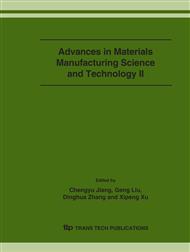p.65
p.69
p.73
p.77
p.81
p.85
p.89
p.93
p.97
Experimental Investigation on Friction Performance of Mechanical Seals with a Laser-Textured Seal Face
Abstract:
Regular micro-surface structure in the form of micro-pores produced on the face of mechanical seals by laser technology can be used to improve the friction performance of the seal mating rings. A test rig with variable axial load was used to test laser-textured seal rings with micro-pores of various pore depth and pore ratio to study the effect of the laser-textured seal face structure parameters on the friction performance of mechanical seals. It is found that there are optimum texturing face parameters at which the friction torque and the face temperature rise of seal rings are minimum. Results of these tests show that the micro-pores on one of the seal mating faces can generate substantial hydrodynamic effect. Heat generation due to frictional contact on seal-ring surfaces is a major factor that causes deterioration of face seals and shortens their service life[1,2]. Excessive temperature rise can be avoided by improving structure of a seal surface. By means of laser technology return-flow structure, oblique line groove and spherical micro-pores are engraved on the seal face[3-5]. The research shows that substantial hydrodynamic effect can be generated between the seal faces with micro-pores[6-8]. In this study experiments are performed on laser-textured micro-pores seal faces at various axial loads to investigate the effect of the face structure and operating parameters on friction torque and face temperature rise.
Info:
Periodical:
Pages:
81-84
Citation:
Online since:
December 2006
Authors:
Keywords:
Price:
Сopyright:
© 2006 Trans Tech Publications Ltd. All Rights Reserved
Share:
Citation:


